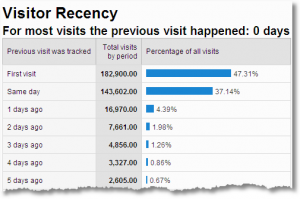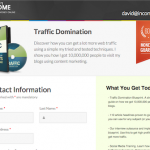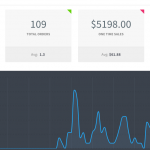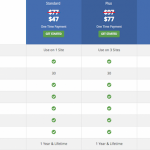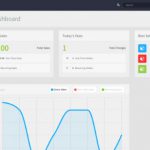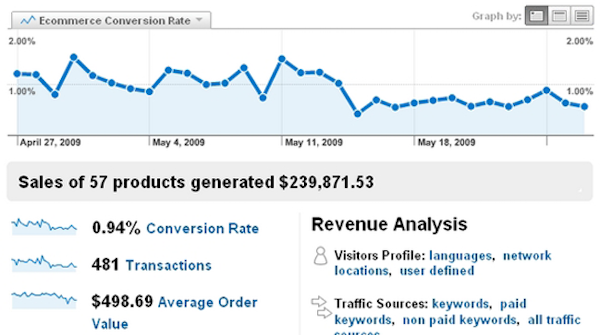
There’s no question that internet marketing nowadays is much more challenging than ever before. Although the technology and tools we have available to us are getting better and cleverer, everything else is also on the increase, much to our detriment: the cost of getting targeted, qualified traffic; the sheer amount and tenacity of the competitive environment; not to mention the continuing improvement of buyer sophistication – all contribute to making our business goals even further from our reach.
Thus, Conversion Rate Optimization (CRO) is no longer a nice-to-have, but an absolute must for us internet marketers, and we all know it. Some of you reading this might even be “closet conversion optimizers” – you’ve been secretly running tests on your own but because you haven’t been seeing improvements, you haven’t dared come out of the closet to brandish your impressive conversion rate increase to your peers. Meanwhile, the tiny sliver of hope you have left about gaining more bang out of your marketing buck is hanging by a delicate thread.
But it’s not your fault. Most likely, you’re getting paltry results because you’re implementing some changes that are actually working against you. And most likely, the changes you’d been making are stemming from false assumptions and ineffective methodologies.
So here I discuss the most common myths and misconceptions that many people have that actually hurt their conversion optimization efforts. If you haven’t ran any conversion optimization tests yet (but want to do it or hire someone to do it for you), pay special attention as well because these revelations will save you a ton of time, heartache and money.
Myth #1: It’s OK to test whatever I feel like testing because conversion optimization is all about creating magic buttons, following “best practices,” changing elements willy nilly, and then seeing what works best from there.
“It’s not converting too well because the design looks outdated. So let’s redesign the logo, the brand identity and the entire flippin’ sales page. I’m sure the conversion rate will improve after that”, is a common demand we hear from first-time clients.
They can hardly be blamed though. At first glance it does seem like CRO is all about changing elements like the size of call-to-action buttons or the color of headlines and seeing what sticks, but it actually goes much deeper than that.
Imagine that your website is a bucket. Think of your visitors as water going into the bucket. Now think of the things that are making your visitors not buy or leave your website as holes in your bucket (and there are many!).

You can’t optimize your conversion rate until you know exactly what’s causing the holes in your business bucket.
Your bucket is leaking, BIG time.
And the thing is that in real life, you can’t easily see where the damn holes are – and that’s the problem.
Redesigning elements of your website without first investigating what could be going wrong is just like getting a flashier, posher, different-colored (but also hole-infested) bucket. It can’t better serve you or your customers if you are still stuck with the same problems as before, and you are several thousand dollars worse off.
The solution is obvious: you must thoroughly investigate and find out the nature, location and shape of the holes, and based on your findings, come up with the appropriate solutions to repair those leaks.
The conversion culprits could vary. Broadly speaking, it’s possible that:
- Your website is difficult to use or certain information are hard to find.
- Your copy is confusing or boring. Maybe it’s “too hypey”. Maybe it’s heartless, or maybe it’s simply flat out inappropriate because it’s tapping on the wrong buyer motivations.
- Your website doesn’t look credible/trustworthy.
- Most of the traffic you’re getting are unqualified, or they’re just researching/“window shopping” at this point in time.
- Your visitors don’t trust you or believe your claims.
- Some of your visitors think your offer is not the best one (at this time) for them.
- You’re forcing your prospects to go through an unnecessarily frustrating process to get what they want, so they exit.
As you can see, each problem would require a solution unique to itself. There’s no one-size-fits-all plug available, unfortunately. Like it or not, the only time you’d be able to take the appropriate actions to improve your conversion rate is when you know exactly what’s preventing your prospects from taking the desired action.
Simply put, your decisions must be data-driven, not opinion-driven.
Myth #2: I don’t need to survey or talk to my customers/target market. I know them very well and I know exactly what’s going on in their minds. I dictate what changes should be made.
Myth #2 is very similar to Myth #1, but coming from a slightly different angle. While myth #1 is essentially stemming from the belief “it’s OK to make changes without doing any research first”, myth #2 is more about the false assumption that since you can imagine being your customers, why bother asking them anything at all?
Remember that regardless of the industry you’re in, or even if you’re selling just one type of product, you’re likely to be marketing to many different customer profiles or different market segments who naturally would then have different motivations.
Take a weight loss product as a classic example. An obese and hormonal teenage girl would have different motivations compared to an overweight and heartbroken 49-year old male divorcee, or a 28-year old woman who just gave birth. Could absolutely know exactly how to think like each of these market segments effectively without asking them for feedback?

Communicate in a way that answers this primordial question for as many of your prospects as possible.
And that’s just the bit where we consider the buyers’ layers of motivation. I haven’t even mentioned different personalities or styles of processing information, like:
- Methodical – or the I-actually-read-all-the-fine-print anal type
- Spontaneous – or the just-gimme-the-bullet-points-please type
- Social – or the I’mma-buy-based-on-what-other-people-say type
- Competitive – or the just-show-me-how-it’d-make-me-faster-richer-sexier-better-stronger-I-don’t-care-about-anything-else type.
The point is different types of people go to your website. If you really want your site to convert, it’s best to gather feedback from the very people you hope to serve – and use the market intelligence you’ve gathered to help you craft your next experiments.
Myth #3: Conversion Optimization is a matter of guessing what to test using my gut instincts.
Using your gut instincts could be a great tool when forming hypotheses to test, but don’t rely on it alone. For example, you might suspect that the reason why you’re not converting well is because you’re providing too many packages to choose from. That’s well and good, but don’t go about creating a “6 packages VS 3 packages” right away.
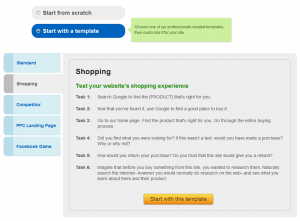
Apart from surveys and heatmaps, creating usability tests is another way to really get in the head of your target market.
What if the real problem is not the number of choices per se, but that your prospects are unsure which package is best for them to pick, because the unique advantages of each package are unclear? If this is the case, then the appropriate test to conduct involves creating pages where the packages have clearer and easier-to-understand unique value propositions – NOT reducing the number of packages on offer.
Form your theories but do whatever’s needed to investigate and uncover the actual problems first, and then implement the appropriate experiment to find the possible best combination of solutions.
Myth #4: If I copy a great company’s website design, layout, colour scheme and words, I’ll enjoy the same high conversion rate.
If this is the case, then we can all just model all our websites after Schwan’s or Vitacost.com and we’d enjoy over 24% conversion rate.
Conversion case studies are there not for you to copy exactly, but for you to gain insights from. Just because someone changed their call-to-action button from a green square to a red rectangle and gained a 16% lift in conversion doesn’t mean you’d enjoy the same lift if you implement the same change.
Myth #5: Conversion Optimization is all about making a webpage look great and look high-tech and all fancy. It has nothing to do with anything else.
I’m a sucker for intelligent, beautiful designs, but design is not the end-all-and-be-all. In fact, there are many impressively designed websites that are not persuasive at all.
Design is just an element (and a superficial one at that) among many other elements that make up your website.
Design is just like hair, make-up, jewelry and clothes. You can dress someone up looking all snazzy and sophisticated, but at the end of the day, it’s still their personality, character, and the person they are inside that counts.
Similarly, sometimes what’s really needed in order to raise your conversion rate is not a website redesign, but changing an aspect of your business “inner game”. This could mean changing/rethinking your philosophy, your values, your product positioning, your brand strategy, your business processes, redefining your core competencies, restructuring your main offers, reworking your company culture, etc.
You have to be willing to change yourself and your business if you are really serious at dominating your market. At the heart of CRO is the principle continuous improvement. This should cover every single thing in your business and your thinking, not just your website. Otherwise the benefits you’d reap would be superficial and short-lived.
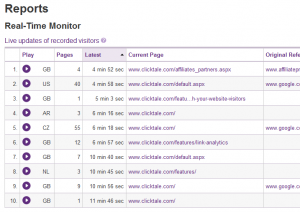
Creepy or genius? Clicktale is a tool that records visitor sessions. It’s just like looking over their shoulders as they use your website!
Myth #6: CRO is about manipulating as many visitors as possible to do what *I* want them to do: buy.
Of course eventually we want as many of our visitors to buy or perform whatever action needed to make profits for our business. But there’s a subtle added later of depth to this dimension. But understand that some visitors go to your website with an intention other than buying or subscribing. Maybe they are there to find a specific article they read before, and want to share it, or they want to just plain marvel at your awesomeness and drool over your pictures which isn’t bad at all. 😉
Imagine you’re selling software online. It comes in standard and deluxe version. You make more profit if you sell more deluxe versions, so you really should gear your entire website to getting people to buy the deluxe version. That’s just right, isn’t it?
Well, over the short term, yes it could make you more money, but it could bite you in the ass over the long term if that’s your sole focus.
If the standard version is the best fit for Joe’s current needs, then it’s your job to help Joe understand this and help him make a well-informed buying decision. Sure, you could have sold him the deluxe version and made more money, but what if he used it and got put off by the extra features he didn’t need? What if he felt duped and put up negative reviews online and encouraged others to never buy from you? (Reflect about this especially if you have a high refund rate or member attrition rate or high number of complaints from customers)
CRO is not about manipulation so that you make a sale regardless of what’s the best fit for your customer. Rather, it’s a win-win process, in which you find out exactly what would serve your prospects best given their unique situations, so that you could align your business to meet their needs, thus helping them get exactly what they were looking for.
Myth #7: The shorter the sales presentation, the better. (Or the shorter the sales copy/video, the better).
Not necessarily. In fact, there had been cases where longer sales presentations or longer sales pages had been tested to convert higher.
People who read your sales letter have questions, concerns, doubts and objections. In order to convert them into buyers, you must uncover all of their concerns and address them in the most effective way possible.
Don’t worry about the length of your sales presentation. The fact is that people who are really interested in what you’re offering will put in the time needed to digest your information. The crime is not long sales letters per se, but flat, boring, unpersuasive sales letters that fail to connect with and move your audience to act.
Is it worth eliminating the fluff? Absolutely. But don’t aim for brevity for brevity’s sake alone. Instead, aim for aligned persuasion.
Myth #8: Sales conversion rate is the only metric I should care about.
Depending on your business/website objectives, there are many other metrics that, if you also track, would give you a much deeper understanding of how to achieve your goals faster and more effectively.
Case in point: for non e-commerce sites like news sites or blogs, useful metrics to track are Visitor Loyalty (how often people visit your site), and Visitor Recency (the amount of time in between visits).
So you see, apart from the question, “how to increase my website conversion to X%?” there are other interesting (and fun!) questions you could aim to answer in your research or tests, such as:
- Which PPC campaigns/traffic sources/search keywords are resulting to higher Average Order Value and why?
- Which content on my site are generating me the most [ad clicks/opt-ins/sales] and why?
- Which of my email marketing campaigns are generating the most opens/clicks/sales and why?
- Which price point results to most sales over the long term without hurting the refund or attrition rate?
- Which traffic sources are giving me the most engaged visitors/ highest-converting traffic and why?
- How much is my Cost Per Acquisition?
- Which of my content are the top 20 most shared/commented on and why?
- Which traffic sources are generating me the highest revenues and why?
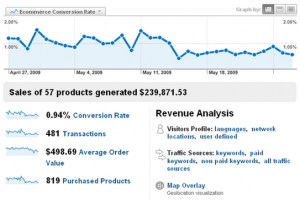
Which of your marketing campaigns are resulting to higher Ave Order Value (AOV)? What creative upsell tactics could you do to increase AOV?
While it’s good to know what your visitors did while on your website, it’s much better if you also know WHY they behaved the way they did. While it’s good to know how many transactions occurred or how much money you made, it’s much better if you also know the reasons why you made as much as you did.
Conclusion
To create tests without knowing what the real problems are is like a plumber trying to unclog pipes without knowing which pipes are blocked in the first place. Stop guessing and operating from myths. Instead, start investigating what exactly are the reasons why visitors are not converting, so you can start implementing the correct solution.
There’s a lot more to conversion rate optimisation than what’s on the page: you need to consider your visitors’ objections, motivations, personality, communication style, their stage in the buying cycle, their goals and expectations.
If you dig deeper to uncover the roots of your conversion problems and implement win-win solutions, you’d soon enjoy a higher conversion and you could finally come out of that closet. 😉
